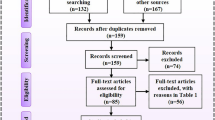Abstract
Background
Many patients undergo a revision surgery after malar reduction, which is one of the most popular aesthetic surgeries in Asia. We reviewed the leading causes of revision for malar reduction surgery to establish proper indications for revision, seek adequate surgical strategies, and share the results from revision surgical cases.
Methods
A retrospective review was conducted involving 341 patients who underwent malar reduction reoperation between March 2010 and June 2015. Surgical strategies were decided based upon specific problems and complaints from the previous surgery. Facial photographs, cephalography, and computed tomography images were analyzed, and a patient satisfaction survey was conducted before and after the surgery.
Results
A total of 341 patients (321 women, 20 men; average age, 26.6 years, range 18–40 years) were included. The main causes of reoperations were subjective dissatisfaction and nonunion-related symptoms. Undercorrection of the zygomatic body and arch (n = 175, 51.3%) was the most frequent reason for dissatisfaction. The patients underwent revision surgeries via different techniques and strategies based on previous problems from primary surgery, and postoperative patient satisfaction was high. Complications occurred in 35 patients (10.3%) after revision.
Conclusions
Based on the results of this study, patient dissatisfaction with the procedure can be minimized beforehand through accurate goal identification and careful planning. Bone nonunion is usually due to excessive bone resection during zygoma reduction surgery. Careful selection of the reposition site and appropriate fixation based on a thorough understanding of masseter action are essential in ensuring satisfactory outcomes without adverse side effects.
Level of Evidence IV
This journal requires that authors assign a level of evidence to each article. For a full description of these Evidence-Based Medicine ratings, please refer to the Table of Contents or the online Instructions to Authors www.springer.com/00266.





Similar content being viewed by others
References
Onizuka T, Watanabe K, Takasu K, Keyama A (1983) Reduction malar plasty. Aesthet Plast Surg 7(2):121–125
Baek SM, Chung YD, Kim SS (1991) Reduction malarplasty. Plast Reconstr Surg 88(1):53–61
Uhm KI, Lew JM (1991) Prominent zygoma in orientals: classification and treatment. Ann Plast Surg 26(2):164–170
Sumiya N, Kondo S, Ito Y, Ozumi K, Otani K, Wako M (1997) Reduction malarplasty. Plast Reconstr Surg 100(2):461–467
Choi HY, Lee SW, Lew JM (1999) True intraoral reduction malarplasty with a minimally invasive technique. Aesthet Plast Surg 23(5):354–360
Kim YH, Seul JH (2000) Reduction malarplasty through an intraoral incision: a new method. Plast Reconstr Surg 106(7):1514–1519
Mahatumarat C, Rojvachiranonda N (2003) Reduction malarplasty without external incision: a simple technique. Aesthet Plast Surg 27(3):167–171
Lee JG, Park YW (2003) Intraoral approach for reduction malarplasty: a simple method. Plast Reconstr Surg 111(1):453–460
Lee YH, Lee SW (2009) Zygomatic nonunion after reduction malarplasty. J Craniofac Surg 20(3):849–852
Baek RM, Kim J, Lee SW (2010) Revision reduction malarplasty with coronal approach. J Plast Reconstr Aesthet Surg 63(12):2018–2024
Lee JS, Lee JW, Yang JD, Chung HY, Cho BC, Choi KY (2015) A rare complication of reduction malarplasty. Aesthet Plast Surg 39(2):240–242
Baek RM, Heo CY, Lee SW (2009) Temporal dissection technique that prevents temporal hollowing in coronal approach. J Craniofac Surg 20(3):748–751
Baek RM, Kim J, Kim BK (2012) Three-dimensional assessment of zygomatic malunion using computed tomography in patients with cheek ptosis caused by reduction malarplasty. J Plast Reconstr Aesthet Surg 65(4):448–455
Von Gralath Donati (1961) R. [Methods of reduction and fixation in maxillo-facial traumatology. II. Fractures of the malar bone and zygomatic arch]. Valsalva 37:276–284
Rinehart GC, Marsh JL, Hemmer KM, Bresina S (1989) Internal fixation of malar fractures: an experimental biophysical study. Plast Reconstr Surg 84(1):21–25 ; discussion 6–8
Guerrero R (2013) A new assisted fixation technique to prevent zygoma displacement in malar reduction. Aesthet Plast Surg 37(4):697
Tadj A, Kimble FW (2003) Fractured zygomas. ANZ J Surg 73(1–2):49–54
Lee EI, Mohan K, Koshy JC, Hollier LH Jr (2010) Optimizing the surgical management of zygomaticomaxillary complex fractures. Semin Plast Surg 24(4):389–397
Manson PN, Glassman D, Vanderkolk C, Petty P, Crawley WA (1990) Rigid stabilization of sagittal fractures of the maxilla and palate. Plast Reconstr Surg 85(5):711–717
Graham WP 3rd, Acker G, Rosenfeld K, Lehr HB (1970) Simple reduction of “zygomatic arch” fractures. J Trauma 10(10):874–876
Czerwinski M, Lee C (2004) Traumatic arch injury: indications and an endoscopic method of repair. Facial Plast Surg 20(3):231–238
Bansal N, Saha S, Jaiswal J, Samadi F (2014) Pain elimination during injection with newer electronic devices: a comparative evaluation in children. Int J Clin Pediatr Dent 7(2):71–76
Varadharaja M, Udhya J, Srinivasan I, Sivakumar JS, Karthik RS, Manivanan M (2014) Comparative clinical evaluation of transcutaneous electrical nerve stimulator over conventional local anesthesia in children seeking dental procedures: a clinical study. J Pharm Bioallied Sci 6(Suppl 1):S113–S117
Mu X (2010) Experience in East Asian facial recontouring: reduction malarplasty and mandibular reshaping. Arch Facial Plast Surg 12(4):222–229
Zhang Y, Tang M, Jin R, Zhang Y, Zhang Y, Wei M et al (2014) Comparison of three techniques of reduction malarplasty in zygomaticus and massateric biomechanical changes and relevant complications. Ann Plast Surg 73(2):131–136
Lin LX, Yuan JL, Wang YT, Huang Y, Wang P, Wang XM (2015) A new infracture technique for reduction malarplasty with an L-shaped osteotomy line. Med Sci Monit 21:1949–1954
Funding
The authors have no financial interest to declare in relation to the content of this article.
Author information
Authors and Affiliations
Corresponding author
Ethics declarations
Conflict of interest
The authors declare that they have no conflict of interest.
Ethical Approval
All procedures performed in studies involving human participants were in accordance with the ethical standards of the institutional and/or national research committee and with the 1964 Helsinki declaration and its later amendments or comparable ethical standards.
Electronic supplementary material
Below is the link to the electronic supplementary material.
Rights and permissions
About this article
Cite this article
Lee, S.W., Jeong, Y.W. & Myung, Y. Revision Surgery for Zygoma Reduction: Causes, Indications, Solutions, and Results from a 5-Year Review of 341 Cases. Aesth Plast Surg 41, 161–170 (2017). https://doi.org/10.1007/s00266-016-0723-9
Received:
Accepted:
Published:
Issue Date:
DOI: https://doi.org/10.1007/s00266-016-0723-9




